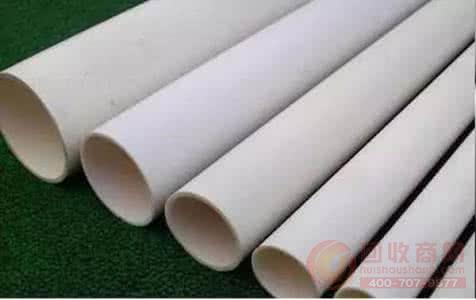
UPVC, also known as hard PVC, is an amorphous thermoplastic resin made by polymerizing vinyl chloride monomer with certain additives (such as stabilizers, lubricants, fillers, etc.).
In addition to the use of additives, the method of blending and modifying with other resins has been adopted, which has obvious practical value. These resins are CPVC, PE, aBS, EVA, MBS, and the like.
UPVC has a high melt viscosity and poor activity, and even if the injection pressure and melt temperature are improved, the change in activity is not large. In addition, the molding temperature of the resin is very close to the thermal decomposition temperature, and the temperature range in which molding can be performed is narrow, which is a material that is difficult to mold.
1, plastic processing
After 24 hours at room temperature, the amount of water absorption is less than 0.02%, so there is no need to dry. If it must be dried, it can be placed in a hot gas oven at 60-70 ° C for 3 hours, or a dryer at 80 ° C for 1-1.5 hours.
Recycled materials can be mixed with up to 20% of the new material, depending on the ultimate use of the product. Abuse of recycled materials can cause injection molding to fail, not only because there are too many recycled components, but also because the materials are reprocessed many times. The more the quality of the recycled material is recovered, the more it is recycled.
2, injection molding machine selection
UPVC has a high viscosity and easy decomposition, and the decomposition products have a corrosive effect on iron. The plastic injection parts and temperature control system must be used for injection molding.
Each type of clamping force model covered by Ramada has a special UPVC plastic injection system, and a special safety door device is required for the core pulling of UPVC pipe products. Under normal circumstances, as long as the injection volume can meet the weight requirements, this series of UPVC special injection molding equipment can be used to form high quality products.
3, mold and gate design
The mold temperature can be set to 40 °C. The length of the flow path is short and the diameter is large to reduce pressure loss and pressure holding energy to the cavity. The shorter the gate, the better, the die-cut surface should be round, the diameter of the nozzle mouth is at least 6 mm, and the shape is conical, and the inner angle is 5°.
The die-cut surface of the main channel is also round, combined with a cold well, connected to the main channel and gate by the radius of the cut surface, and the diameter can be 7mm.
The gate is connected to the plastic part by the radius of the rounded surface. The shorter the better, the smoother the die cut surface.
Cold wells prevent semi-solidified materials from entering the mold cavity, and its importance is often overlooked.
The position of the gate should be correct so that the material can move smoothly on the flow path, and it will not stay in the traces of sharp corners, debris and metal, so as to avoid the situation of compression or decompression, the flow path should be kept smooth and smooth.
The mold is cast in stainless steel with a chromium content of at least 13%, preferably 16%, and a Rockwell hardness of at least 55. The hard steel mold can be chrome-plated to form a protective effect.
After production, use a mild lye to carefully clean the mold surface and then spray an oily spray or a siliceous spray.
4, the temperature of the melt
Available in air-to-air method, ranging from 185-205 °C. The correct melt temperature of the UPVC can be known from the smoothness of the injected material. If the material is rough after the shot, it is confirmed that the material is not uniform (insufficient plasticization), indicating that the temperature is too low; if the foam is emitted after the injection and a large amount of smoke is emitted, the temperature is too high.
5, injection speed
The rate of fire is slow, otherwise excessive shearing will degrade the material. When UPVC is used to produce extremely smooth thick-walled products, multi-stage injection mold filling speed should be used.
6, screw speed
Should be in accordance with the molding cycle. The screw surface speed should not exceed 0.15-0.2m/s
7, back pressure
Up to 150bar, the lower the better, the common 5bar.
8, staying time
At 200 ° C, the cylinder residence time can not exceed 5 minutes. When the temperature is 210 ° C, the cylinder residence time can not exceed 3 minutes.
Sealand is a trustworthy supplier of Mass Flow Transmitter, Mass Flow Sensor, Mass Flow Metre, Coriolis Metre, ATEX, IECEx & CE approved.
Sealand Mass flow meter measures the mass based on Coriolis effort. The operating principle involves inducing a vibration of the tube through which the fluid passes. The vibration, though not completely circular, provides the rotating reference frame that gives rise to the Coriolis effect. While specific methods vary according to the design of the flow meter, sensors monitor and analyze changes in frequency, phase shift & amplitude of the vibrating flow tubes. The changes observed represent the mass flow rate and density of the fluid.
Features
â— Measurement is not influenced by flow density, viscosity, temperature & pressure;
â— Low requirement of straight pipe, because nothing inside holds back the flow;
â— Low power dissipation; stable zero point; better accuracy;
â— Meter is ARM system with 3 calculators to count density, temperature & mass flow rate;
â— Transmitter is assembled by surface mounting technology with self-inspection function;
â— ATEX approved(excluding Transmitter F210). Cert. No. TPS 18 ATEX 04516 001 X
Mass Flow Transmitter, Mass Flow Sensor, Mass Flow Metre, Coriolis Metre
Zhejiang Sealand Technology Co., Ltd. , https://www.sealandflowmeters.com
